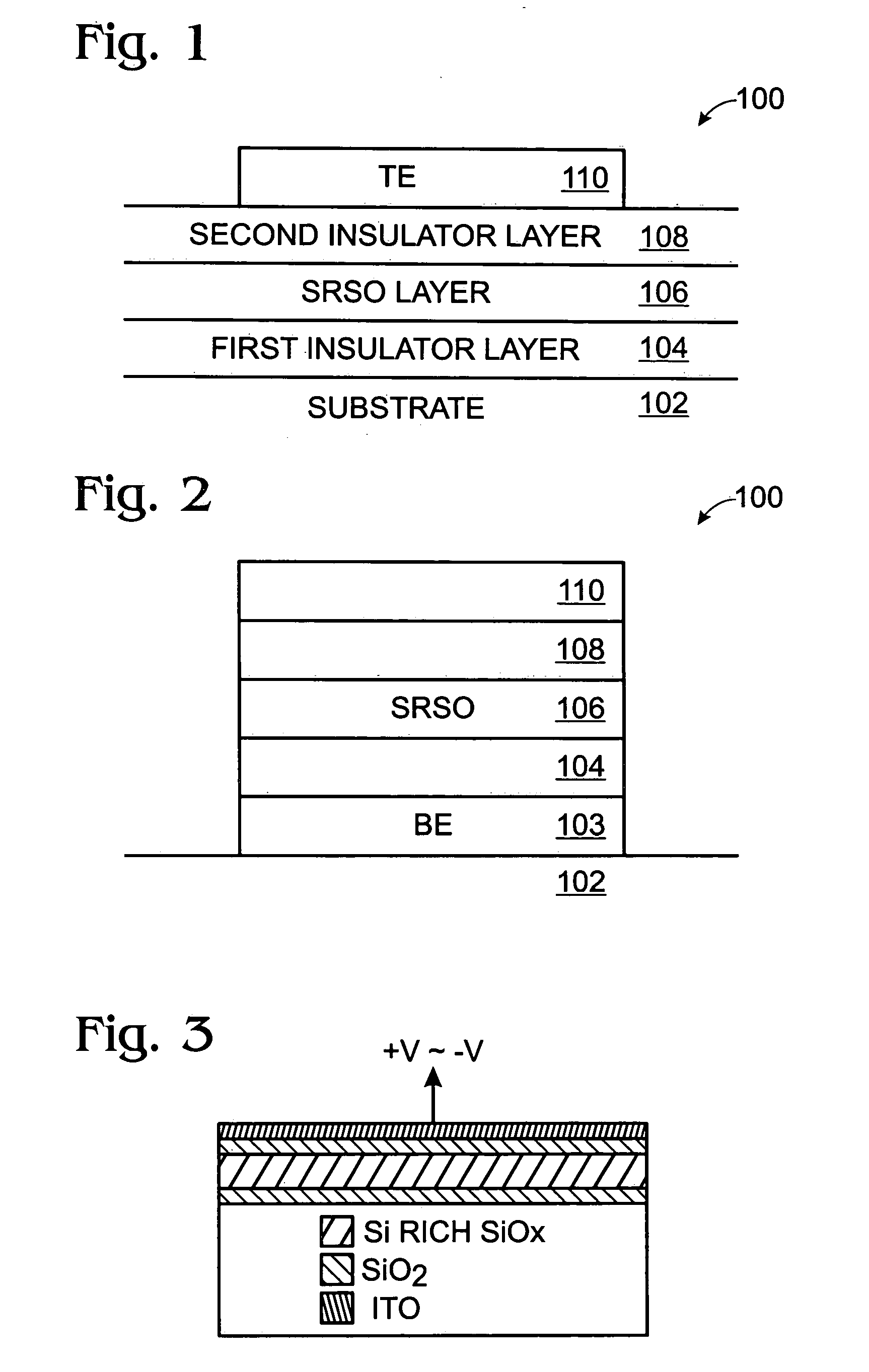Wide wavelength range silicon electroluminescence device
a silicon electroluminescence and wide wavelength range technology, applied in the field of integrated circuit (ic) fabrication, can solve the problems of limiting the use of practical el devices, reducing the peak height (intensity) decay, etc., and achieves the reduction of defects in si-rich silicon dioxide materials, limiting their use in practical el, and increasing the wavelength range
- Summary
- Abstract
- Description
- Claims
- Application Information
AI Technical Summary
Benefits of technology
Problems solved by technology
Method used
Image
Examples
Embodiment Construction
[0026]FIG. 1 is a partial cross-sectional view of a short-wavelength silicon (Si) electroluminescence (EL) device. The device 100 comprises a substrate 102, a first insulator layer 104 overlying the substrate 102, and a silicon-rich silicon oxide (SRSO) layer 106 overlying the first insulator layer 104. The SRSO layer 106 is embedded with nanocrystalline Si having a size in the range of 0.5 to 5 nm. Typically, the SRSO layer 106 has a Si richness in the range of 5 to 40%. A second insulator layer 108 overlies the SRSO layer 106 , and a top electrode 110 (TE) overlies the second insulator layer 108 .
[0027] Defects in the SRSO layer 106 occur as a result of impurities, non-uniformities, vacancies of Si or O, or porosity, to name a few possibilities. Using processes discussed below, impurities can be reduced and improvements made in uniformity, as compared to a conventional implantation process. For example, after thermal annealing, the vacancies of Si or O can be reduced, and the por...
PUM
 Login to View More
Login to View More Abstract
Description
Claims
Application Information
 Login to View More
Login to View More - R&D
- Intellectual Property
- Life Sciences
- Materials
- Tech Scout
- Unparalleled Data Quality
- Higher Quality Content
- 60% Fewer Hallucinations
Browse by: Latest US Patents, China's latest patents, Technical Efficacy Thesaurus, Application Domain, Technology Topic, Popular Technical Reports.
© 2025 PatSnap. All rights reserved.Legal|Privacy policy|Modern Slavery Act Transparency Statement|Sitemap|About US| Contact US: help@patsnap.com



